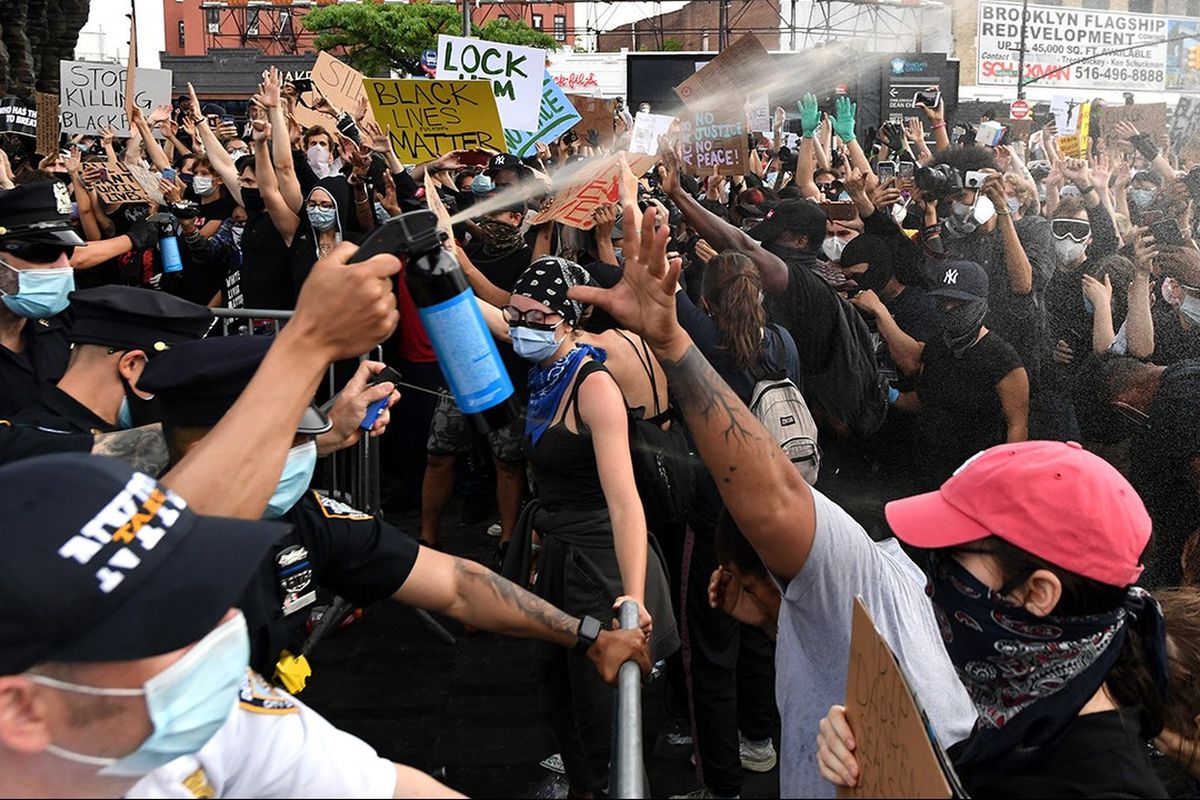

By Joshua Cenzano
NEW YORK, NY – The Civilian Complaint Review Broad of New York City has presented evidence suggesting misconduct by 65 officers of the NYPD allegedly committed during the protests by Black Lives Matter.
After reviewing 750 complaints regarding police misconduct, the CCRB reviewed pertinent evidence looking to substantiate as many claims as it could, and were ultimately able to provide substantive evidence for one-third of allegations received.
Of the substantiated claims, allegations include abuse of authority, offensive language, force, untruthful statements, and discourtesy. The CCRB has stratified the allegations by recommended extent of punishment, including criminal charges and several  lesser tiers of internal discipline.
lesser tiers of internal discipline.
Fred Davie, chair of the CCRB, said in a statement that his organization will continue to investigate all allegations that it receives against police officers and emphasized the necessity of oversight over officers who respond to large-scale demonstrations such as those organized by Black Lives Matter.
He added, “It is important for all misconduct to be taken seriously and all officers who commit misconduct must be held accountable.”
Following the murder of George Floyd by Minneapolis police last year, protests and demonstrations against police misconduct and brutality have escalated, leading to a higher volume of reports against officers.
In one instance, police were documented launching tear gas canisters and firing rubber bullets at journalists and protesters.
Instances such as these have only served to escalate encounters between protesters and police.
The CCRB has lamented the “unprecedented challenges” that have inhibited its investigations recently; namely, the increase in police officers that have been reported covering their badges or name tags to prevent positive identification. Advocates from the CCRB accused those officers of doing so in order to hide misconduct.
There has consequently been an appreciable increase in cases that end up unresolved due to investigators’ inability to identify officers under scrutiny as a result of this phenomenon. In 2020, 10 percent of cases involved an officer whose identity was unknown; this year, the figure increased to 34 percent.
The NYPD offered a possible explanation to this increase, suggesting that the armbands that officers have been wearing to commemorate fellow police officers that have died from COVID-19 have been obscuring name tags and badges.
Nonetheless, the CCRB has expressed frustration at this difficulty to identify officers, due not only to obscured badges, but also from the failure to follow correct protocols, the use of improper protective equipment, and the misuse of body worn cameras.
The NYPD has announced through a spokesperson that it will work alongside the CCRB in investigating and adjudicating these allegations against its officers. The NYPD has said in the past that it consistently has assisted the CCRB by providing countless hours of footage and intends to maintain compliance.
Despite its complicity, the NYPD through a spokesperson, emphasized officers’ right to due process and differentiated criminal trials from administrative trials regarding possible repercussions against officers accused of misconduct.
According to the department, “Discipline is imposed based on a matrix of penalties that has been agreed upon between the NYPD and CCRB.”
The NYPD has affirmed its desire to keep the investigative processes as transparent as possible, and assured the public that all discipline, whether criminal or administrative, would be made available to the public.

